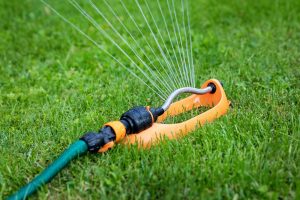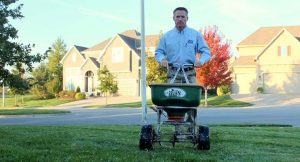How To Keep Your Lawn Green In Summer Heat: The Comprehensive Guide
Summers can be harsh in the Midwest and the hot weather can spell disaster for your lawn’s health and appearance. To keep your full, green yard looking healthy through the year, careful care is needed during the summer months. One of the keys to maintaining a green, healthy lawn in the Midwest summer heat is to maintain a regular and routine watering schedule. To combat the heat waves of Midwest summers, water will be at the center of our plans, no matter if you are in Branson, St. Louis, Kansas City, Springfield, Wichita, or Tulsa, OK.
Tips for Keeping Your Lawn Green in the Summer
A dedicated weekly lawn care plan is the best choice for avoiding heat damage to your lawn and garden. Here are the best strategies and tips for a simple and effective plan for your yard this summer.
Watering Best Practices
Before you begin watering, it is a good practice to check the soil. If the soil feels dry, inspect a few inches below the surface to see if the soil is damp. If it is damp, you can hold off watering for a day. To check for soil dampness, you can get a soil probe that will give you a digital readout of the moisture level of your yard. Another technique is to get a garden spade and stick it straight into your soil. When you pull it out, if it is clean and dry, your soil is dry. If the spade is moist with bits of soil on it, your soil is moist.

Water must reach a depth of six inches to adequately saturate the plant roots. This can usually be accomplished with about one inch of water across your lawn each time you water. Though a sprinkler system can work wonders for your lawn, you can still accomplish healthy lawn maintenance without one. Keep an eye out for problem areas, like grass that is starting to turn bluish-gray. Water these areas by hand to ensure they are getting the necessary amounts of water to thrive.
Mulching Around Your Landscape Plants
Mulching is a great way to help your grass conserve moisture and reduce evaporation. Organic mulches like shredded bark or compost can be an effective barrier against the summer heat. A maximum of two inches should be the ideal height of the mulch you put down. Mulching around your plants prevents evaporation and helps keep the soil cool, promoting the health of your landscape plants.
Mowing Tips to See Great Results
Reduce your mowing frequency during the hottest parts of the summer. When the sweltering heat arrives, you’ll likely be mowing only once per week or even once every ten days.
The general rule is to raise your mower one to two notches above where you mowed in the spring. Your grass should be allowed some extra growth in the summer before mowing, but close monitoring is necessary. A way to visualize this is through the ⅓ rule. You should try to avoid removing more than ⅓ of the grass blade while mowing.
The ideal time to mow is in the early evening when the sun is beginning to go down. This gives your grass ample time to recover overnight. Avoid mowing just after rainfall or after watering. Running mower wheels over the soft ground can damage your grassroots.
Apply High-Quality Fertilizer
Your soil is a rich blend of nutrients unique to your area. It is a good idea to get it tested by a professional to find the deficiencies in your soil’s nutrients.

A healthy green lawn that is irrigated will continue to grow over the summer and will need to be supplemented with fertilizer to maintain its vigor and dark color.
Weed Control
You’ve watered your lawn regularly, applied fertilizer, and mowed properly. Just when you’ve got everything right, a weed pops up. It can be frustrating, but weeds can be taken care of easily. For the individual weeds, simply pluck them out of the ground and make sure you’ve got the entire root. If you have more than a couple of weeds, you will want to use a herbicide. Herbicides are specific in what weeds they control.
Choosing the right herbicide is a great conversation to have with a lawn care professional. They can recommend best practices to rid your lawn of those pesky weeds.
Aeration Benefits
Aerating your lawn is best done in the early fall or spring to allow for maximum benefit to your lawn.
Aerating your lawn is the process of allowing more oxygen into the soil to help create breathing room for your plants’ roots. Over time, soil can become compacted and the amount of oxygen flowing through it can be severely reduced. Aeration aims to add that airflow back to the soil.
Aerating ensures your grassroots are as healthy and as deep as possible to survive the summer heat and drought. Planning ahead and getting your lawn aerated in the fall or spring is the best practice.
Keeping Your Lawn Green in the Summer
While it may seem like a laborious task, keeping your lawn green in the summer only takes a little bit of time to do properly. An adaptive watering and fertilizing schedule is the best defense against the harsh summers in the Midwest.
Contact one of our RYAN Pro’s today and we can help you develop a lawn care plan to conquer the summer heat this year.









